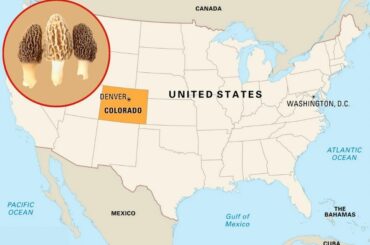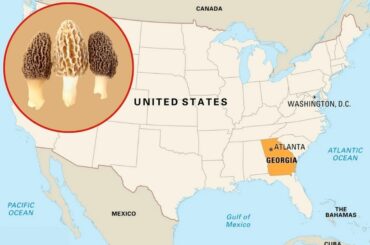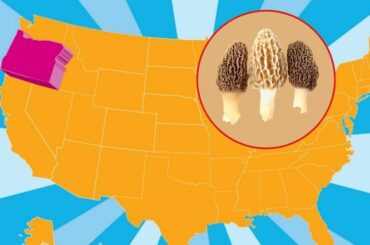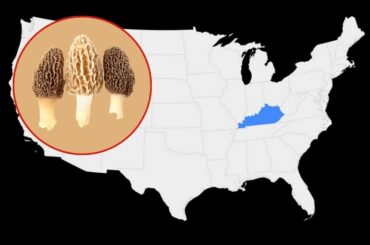Morel mushrooms, with their unique appearance and delicate flavor, have long captivated the interest of mushroom hunters and gourmet chefs alike. These elusive fungi are highly sought after for their culinary qualities and can fetch a high price in the market. But do morel mushrooms grow in California?
Let’s delve into the world of morel mushrooms and explore their presence in the Golden State.
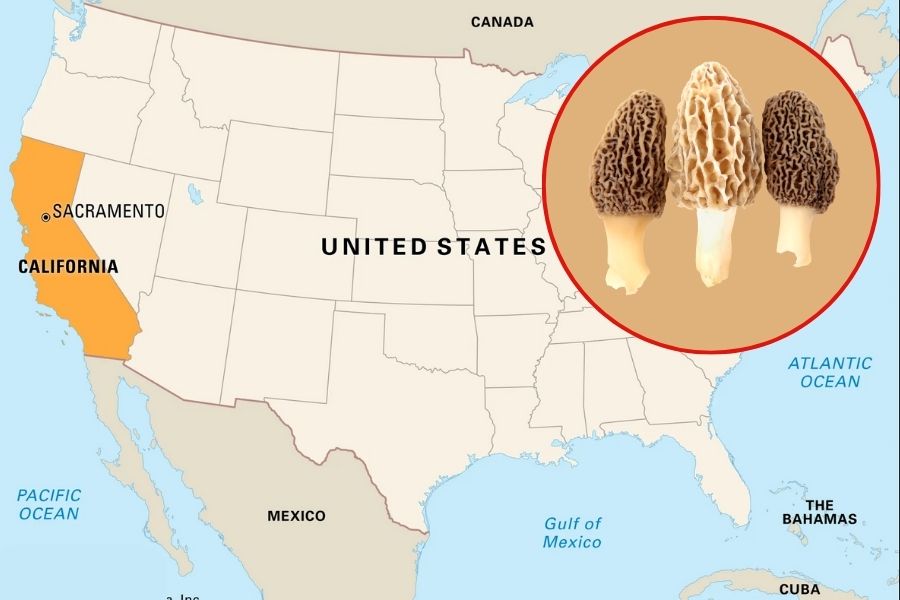
Do Morel Mushrooms Grow in California?
Yes, California’s diverse geography and climate make it a promising destination for mushroom hunting, including the search for morel mushrooms. However, the distribution of morels in California is not as abundant as in some other regions.
The mushroom hunting season typically occurs in the spring, after winter rains and when soil temperatures are optimal. When exploring California for morel mushrooms, some key locations are worth considering. Areas such as the Sierra Nevada mountains, the coastal regions, and certain national parks like Yosemite and Sequoia have been known to yield morel mushroom sightings.
However, it’s important to note that the presence and abundance of morel mushrooms can vary from year to year and even within different regions of the state.
Habitat and Distribution of Morel Mushrooms
Morel mushrooms have a diverse range of natural habitats, including forests, woodlands, and grassy areas. They are often found near trees such as ash, elm, poplar, and apple, forming a symbiotic relationship with their root systems. The specific conditions required for morel mushroom growth can vary depending on the variety.
Morel Mushroom Varieties
Several varieties of morel mushrooms can be found in different parts of North America. The most common varieties include the black morel (Morchella elata), yellow morel (Morchella esculenta), and half-free morel (Morchella semilibera). Each variety has its own unique characteristics, including variations in cap color, stem shape, and spore pattern.
Tips for Successful Mushroom Hunting
To increase your chances of a successful morel mushroom hunt, it’s essential to come prepared. First and foremost, you’ll need appropriate gear such as a sturdy basket or mesh bag for collecting mushrooms, a knife for harvesting, and a field guide or smartphone app to help identify mushrooms accurately.
When searching for morel mushrooms, keep an eye out for signs of their preferred habitats. Look for recently burned areas, decaying wood, or areas with rich organic matter. Morels tend to emerge in these environments, particularly after periods of rainfall.
Identifying morel mushrooms can be challenging, especially for beginners. Look for the characteristic honeycomb-shaped caps, which can vary in color from yellow, tan, or black, depending on the variety. Study their distinct stem and cap structures, as well as the presence of a hollow interior. If unsure about the identification, it’s always best to consult an experienced mushroom hunter or mycologist.
Conservation and Sustainable Mushroom Hunting
As mushroom enthusiasts, it’s crucial to practice responsible mushroom hunting to preserve the natural habitats and ensure the sustainability of morel mushrooms. Avoid over-harvesting and only take what you intend to use. Cut morels at the base of the stem, leaving the underground network intact to allow for future growth.
Additionally, make sure to respect private property rights and obtain permission before foraging on someone else’s land. It’s also essential to follow any local regulations or restrictions regarding mushroom hunting, as certain areas may have specific guidelines in place.
Conclusion
While morel mushrooms do grow in California, their presence and abundance can be unpredictable and vary from year to year. California offers diverse environments that can support the growth of morels, but successful mushroom hunting requires knowledge, patience, and a bit of luck.
So, if you’re an avid mushroom hunter in California, be prepared to explore different locations, adapt to changing conditions, and savor the excitement of finding these elusive and delectable fungi.
FAQs
Can I find morel mushrooms in my backyard in California?
While it’s possible, morel mushrooms are typically found in specific natural habitats rather than residential areas. Exploring suitable environments and public lands can increase your chances of finding them.
Are there any poisonous look-alikes to morel mushrooms?
Yes, there are some poisonous mushrooms that can resemble morels. It’s crucial to be cautious and confident in your identification skills or consult an expert before consuming any wild mushrooms.
How should I store morel mushrooms after harvesting?
It’s best to store morel mushrooms in a breathable container, such as a paper bag or mesh bag, in the refrigerator. Avoid sealing them in plastic bags, as this can cause moisture buildup and accelerate spoilage. Consume them within a few days for the best flavor and quality.
Can I cultivate morel mushrooms at home?
Cultivating morel mushrooms can be challenging and has been a subject of ongoing research. At present, successfully cultivating morels at home remains elusive, and most morels available in the market are still harvested from the wild.
Are morel mushrooms expensive to buy?
Yes, morel mushrooms are considered a delicacy and can be quite expensive to buy, especially when they are out of season or not readily available. Their unique flavor and limited availability contribute to their higher price point.
Custom Message:
Thank you for taking the time to read this article on the growth of morel mushrooms in California. Whether you’re an experienced mushroom hunter or a curious enthusiast, exploring the natural beauty of California in search of these elusive fungi can be a rewarding adventure. Remember to always prioritize responsible foraging practices, respect the environment, and enjoy the magic of discovering these delectable treasures in the wild. Happy hunting!
Disclaimer: The information provided in this article is for educational and informational purposes only. It is not intended as a substitute for professional advice or guidance. Always exercise caution when foraging for wild mushrooms and consult with experts or field guides for proper identification and safety.

